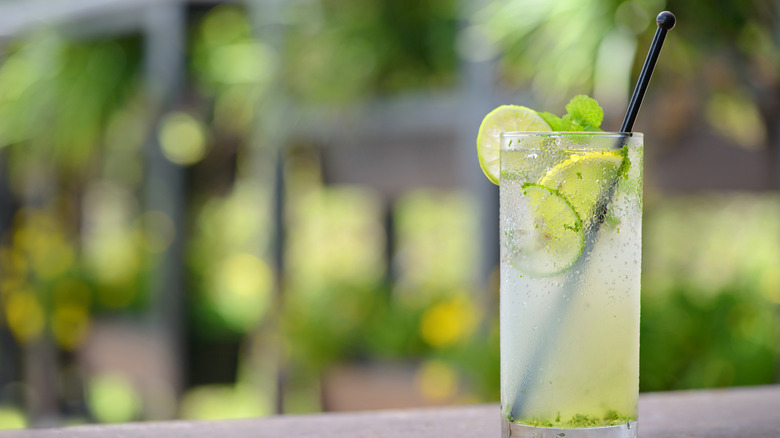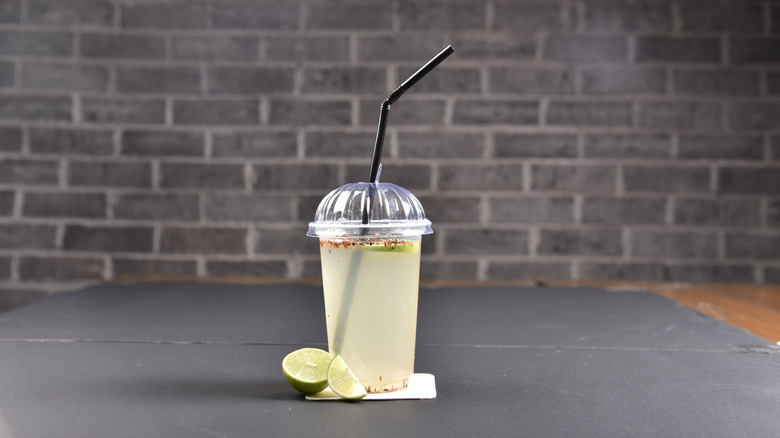How Minnesota's Signature Cocktail, The Bootleg, Got Its Iconic Name
The U.S. boasts no shortage of regional cocktails. There's the ranch water, an easy margarita swap that packs in extra refreshment — an apt fit for Texas's arid west. Or the vibrant Alabama slammer — comprised of a boozy mix of whiskey liqueur, amaretto, orange juice, and berry-based sloe gin — that'll generate a feeling of tipsy comfort real quick. Head to Minnesota, and the signature creation is called the Bootleg.
The drink comes tart and sweet, founded on an easy-to-love combination of lemonade, limeade, and mint. The mixture is usually pre-batched, and combined with a liquor of choice, and topped with soda water over ice. It's a casual yet tasty creation, emerging from a history of consumption at Country Clubs — it's refreshing taste is perfect for sipping after a day on the golf course. As a result, the name comes as a surprise — it's quite a contrast to the cocktail's relaxed character.
Well, as you might suspect with title like Bootleg, the cocktail traces back to Prohibition times. Reportedly, it all started on the beautiful Lake Minnetonka, a beloved drinking spot for Al Capone and the like. The name "the Bootleg" emerged as a reflection of the drink's clandestine consumption, as it was first served in speakeasies. It's said that its aim was to disguise boozy flavors, while also utilizing components — like lemonade — that wouldn't raise suspicions.
The Bootleg's Prohibition-era history
As with many cocktails, origin stories are often more legend than truth. And with the Bootleg's creation during the Prohibition, the details only get more fuzzy. It's clear that the drink didn't emerge from a venerable bartender tradition, with recipe ratios closely scrutinized. For one, there's the open-ended nature of the liquor. Everything from gin to vodka, whiskey, and rum is fit for a pour in the glass. Plus, rather than a careful assembly of complex ingredients in a shaker, all the drinker needs to do is throw mint, lemonade, limeade, and a peeled lime into a blender and then add a couple ounces of liquor — and voila! A simple cocktail with minimal focus on the booze.
In this way, The Bootleg certainly achieves its aim of drinkability. It'd be reasonable to assume its assertive sweet and sour flavors were designed to mask low quality Prohibition spirits. And perhaps its deceiving lemonade-like quality helped maintain an image of sobriety. Since Prohibition-era bartenders kept their inventions and recipes under wraps, the precise backstory is only a guess at best — but what is clear is that the drink is still worth enjoying.

